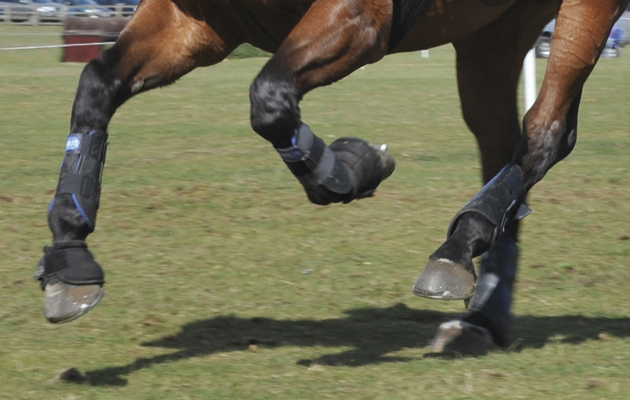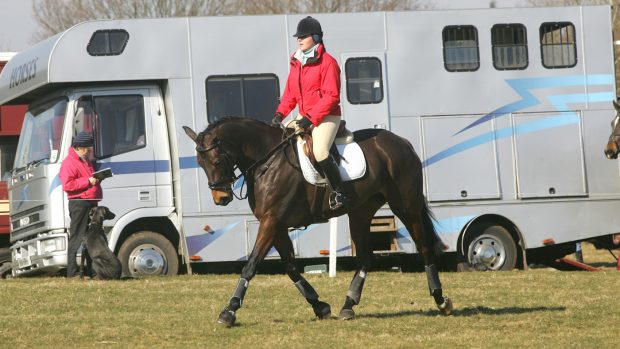Nutrition plays an important role when trying to prevent tying up in horses, so here is a useful case study and sample diet from equine nutritionist Christine Smy for a horse that is susceptible to the condition, which is also known as azoturia.
Case study: horse prone to tying up
Horse: Ebony, 18-year-old 15.3hh Thoroughbred
Feeding issue: prone to tying-up and becoming lean
Owner’s thoughts: “Ebony tied-up earlier this year after she’d had a few days off. What is the best way to prevent it happening again?”
Work schedule: competing occasionally in unaffiliated show jumping, ridden three times a week.
Current diet: high-fibre cubes, low-energy chaff, unmolassed sugar beet.
Sample diet to help prevent tying up in horses
It is now possible to buy medium-energy rations for horses at risk of tying-up and this type of feed will be suitable for Ebony.
These rations contain good levels of energy from digestible fibre and oil, yet starch levels are low. The minerals and vitamins are elevated, concentrating on antioxidants and electrolytes. If possible, feed three or more times a day to increase digestion and absorption.
Slowly replace the current ration with this feed, increasing levels to 3kg a day and higher if workload increases.
In addition, feed:
- An unmolassed oil-based alfalfa chaff (approximately 8% starch, which is very low).
- Up to 200g a day of soya oil. This is equivalent to 600g of a starch-free concentrate. It is a fantastic way to add energy and condition to your mare.
- ½kg sugar beet shreds (dried weight, before soaking) — this provides a good fibre source.
- Ad lib hay day and night depending on the quality and amount of grazing that is available.
Like this? You might also enjoy reading these:
H&H Feed Week: Test your knowledge of the horse’s digestive system
The 10 golden rules of feeding horses
Other ways to help prevent tying up in horses
Once a horse has succumbed to an episode of tying-up, the chances are that they will be susceptible in the future. The following causes and solutions are relevant in maintaining bodyweight, yet reducing further attacks:
- Dehydration and electrolyte imbalances — sodium deficiency is commonly found in diets of horses prone to tying-up. This affects the balance of electrolytes, which stimulate excessive calcium excretion, leading to inability to relax and contract muscles. It is therefore essential to provide electrolytes daily. Salt should be at the top of the ingredients list, ahead of glucose or dextrose.
- Mineral and vitamin deficiencies — absorption rates can be affected by age. Provide a quality concentrate or broad-spectrum mineral and vitamin supplement containing high levels of antioxidants in chelated or bioplex form to assist the removal of free radicals. Many vets advise the addition of selenium and vitamin E supplementation to the diet. This is recommended if you are feeding large amounts of oil and will certainly aid recovery, but to prevent repetition of tying-up, the cause, not the symptoms, should be treated.
- Hormonal fluctuation — this may be relevant to many mares, as it is believed that fluxes in the hormone oestrogen may influence specific minerals and vitamins as well as thyroid levels, all of which can trigger an attack. Susceptible mares can therefore succumb to an episode of tying-up at specific stages of their season. Apparently, chestnut mares are most prone.
H&H 12 October ‘06




